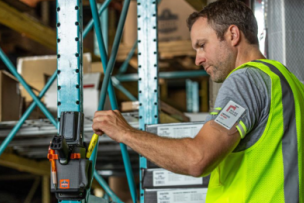Ansell is a global supplier of personal protection (PPE) equipment solutions designed for workers in a wide range of industries. Ansell's customers include businesses engaged in the Manufacturing, Agriculture, Healthcare and Scientific sectors, as well as many other business sectors. Ansell has developed a global presence that includes sales, operations and manufacturing sites in North America, Latin America, Europe and Asia and employs more than 15,000 people worldwide. Ansell's position as a market leader has evolved over more than 100 years of history and can be attributed to our history of providing innovative protection solutions to workers through a deep understanding of the worker experience.
In today's dynamic and tightly regulated industries, maintaining the safety of people and integrity of products is paramount. One of the most critical areas of concern is contamination control in controlled and cleanroom environments. Cleanroom classification standards for ISO 7/8, Grade C/D settings, require the use of protective clothing in compliance with industry standards to reduce the risk of contamination and protect against chemicals. Industries that commonly require cleanroom coveralls include pharmaceutical manufacturing, medical device production, biotechnology, and laboratory and research.
WHAT ARE CLEANROOM HAZARDS?
Cleanrooms are controlled environments that are designed to minimize contamination and maintain an aseptic environment for the preparation of sterile products. However, despite the strict controls in place, there are still hazards within the cleanroom, to both the personnel and the products being manufactured, such as:
-
Chemical exposure, including solvents, acids, and other harmful substances
-
Airborne particles, from human activity, cleanroom equipment and consumables and air handling systems
-
Biological hazards, such as bacteria, viruses, and other microorganisms
SAFETY MEASURES IN CLEANROOMS
It is essential for those working in cleanrooms to be aware of these hazards and take steps to minimize their risk of exposure and reduce the risks to the products. To maintain a safe and controlled environment, a contamination control strategy (CCS) should be in place and include:
-
The wearing of proper cleanroom attire such as low-linting personal protective equipment (PPE), including coveralls, gloves, goggles and face masks
-
Strict protocols for entering and exiting the cleanroom
-
Frequent monitoring for contamination and maintaining a clean and sterile environment
-
Regular maintenance and cleaning of equipment
DISPOSABLE VS. REUSABLE: MAKING THE RIGHT CHOICE FOR CLEANROOM COVERALLS
People remain the primary source of contamination in cleanrooms so it’s critical that the right protective clothing is worn to maintain the cleanroom's credentials and performance. When it comes to selecting cleanroom coveralls, it is important to recognize that while reusable coveralls and disposable coveralls fulfill the same purpose and need, there are fundamental differences which need to be highlighted so you can make an informed choice.
At a glance, both reusable and disposable coveralls serve the same fundamental purpose – providing a barrier against contaminants. However, when delving deeper into their specifics, the disposable coveralls, like those from BioClean™, stand out for several key reasons:
- Post-Processing: Sterilized by gamma irradiation only once, compared to reusable garments which are irradiated (or sterilized by autoclaving) multiple times, which can lead to the breakdown of garment fibers and degrade the fabric.
- Protection: Made from spun-bonded, non-woven polypropylene laminated with a film of polyethylene, ensuring a solid barrier against contaminants and chemical splash, and are Category III Type 5 and 6 classified PPE, compared to reusable garments made from woven polyester which act like filters and provide little chemical protection.
- No Rental Contracts: Disposable coveralls can be supplied as and when required and offer flexibility on changes to size demographic and number of coveralls required. No commitment to complex long-term rental contracts, pay only for the garments used, and no repair costs.
Previously Featured on Ansell's blog.









Talk to Us!
Leave a reply
Your email address will not be published. Required fields are marked *